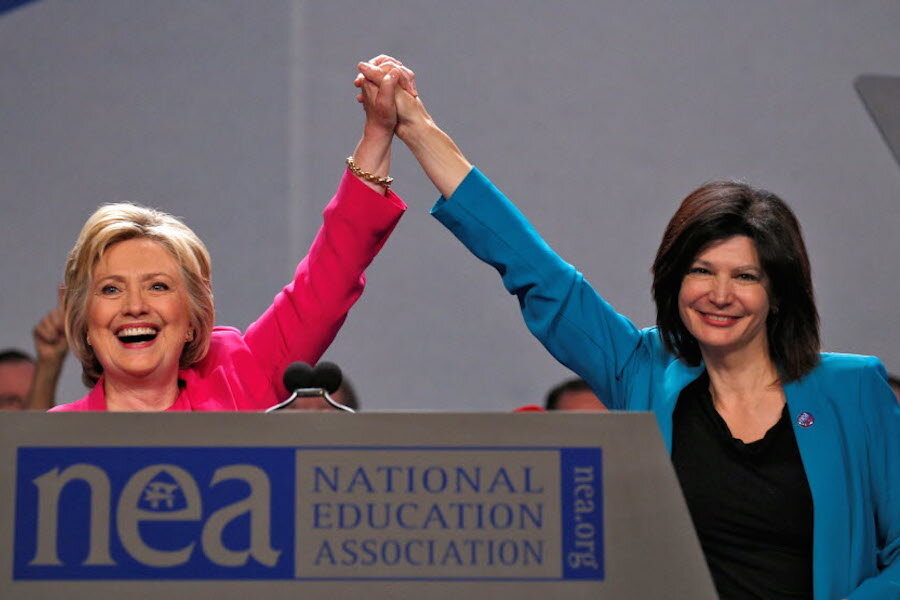Clinton’s new debt-free education proposal could draw Millennials
Loading...
Presumed Democratic presidential nominee Hillary Clinton's campaign took a page from that of Bernie Sanders with her revised education plan, which promises free public higher education for most families.
Education was a topic of heated discussion between the former secretary of state and Vermont's Independent senator during debates earlier this year. Mrs. Clinton had previously been opposed to Senator Sanders's proposal for free tuition. The revised plan falls short of Sanders's proposal, but she is likely hoping it will help sway some of the self-described democratic socialist's supporters, especially debt-strapped Millennials, who have been reluctant to shift their support to Clinton.
Released Wednesday, Clinton's revised plan promises free tuition at in-state, four-year, public colleges and universities to families with annual incomes under $125,000. According to the campaign, that would include more than 80 percent of all US families.
The benefit would roll out slowly over time, beginning with families making $85,000 or less per year. That threshold would increase incrementally by $10,000 each year until 2021. Ms. Clinton added this to her previous proposal that community colleges provide free education for all.
Clinton also proposed debt reforms with changing refinancing of loans to current rates, continuing the Obama administration’s simplified income-based program, giving incentives for employers to contribute to debt payoff, and taking executive action to offer a three-month moratorium on federal student loan payments.
This plan comes after Clinton met with Sanders last month to talk about how Clinton could gain his endorsement. They left the meeting agreeing that Donald Trump must be defeated, but Sanders kept his endorsement as leverage until Clinton gains his trust. Clinton’s new higher education proposal brings her one step closer to a partnership with the senator. Sanders praised the “very bold initiative” on Wednesday, but did not endorse Clinton.
The plan falls short of Sanders’ radical proposal to provide free tuition at public institutions with no income cap, one of many of Sanders's ideas that attracted Millennials, 71 percent of whom voted for Sanders in the Democratic primary, according to ABC News exit polls, while 72 percent of those 65 and older voted for Clinton.
While Clinton’s plan is “practical and feasible,” there is not “sufficient will” for it to be implemented, Beth Akers, fellow at the Brookings Institution’s Brown Center on Education Policy tells The Christian Science Monitor in a phone interview Wednesday.
For the program to be implemented, there “needs to be large legislation change” and that “depends on a lot of factors,” said Ms. Akers.
The total cost of the program was not released by the campaign, but it claims the plan will be “fully paid for by limiting certain tax expenditures for high-income taxpayers,” and students will have to contribute earnings from 10 hours of work per week in addition to families making “affordable and realistic ... contributions.”
The plan, however, may appeal to Millennials. Particularly the moratorium on student debt, Akers said, which would give debt-holders an “additional three-month grace period.” The Clinton campaign claims the executive action would give borrowers “a chance to consolidate their loans, sign up for income-based repayment plans, and ... reduce their monthly interest payments and fees.”
During this period, borrowers would have a high-profile chance to sign up for repayment programs that the Obama administration has expanded, according to a report by Scott Jaschik for Inside Higher Ed. President Obama’s "Revised Pay as You Earn" program allows federal direct loan borrowers to cap their monthly payments at 10 percent of their discretionary income and to stop paying after 20 or 25 years. Much of Clinton’s new plan is aimed at helping those currently with debt, many of which are voting Millennials her campaign seeks to entice.






